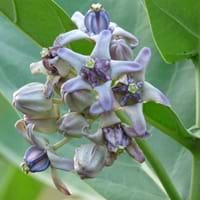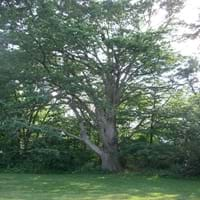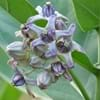Life Span
Annual
Perennial
Origin
Southeastern Asia, India, China
North America, United States, Northeastern United States, Mid-Atlantic United States, Central United States, South-Central United States, Texas, Mexico
Types
Shrub
Not Available
Habitat
Tropical regions
Forests, Ridges, Rocky areas
USDA Hardiness Zone
10-15
4-8
Sunset Zone
H1, H2, 13, 24
2a, 2b, 3a, 3b, 4, 5, 6, 7, 8, 9, 10, 11, 12, 14, 15, 16, 17
Habit
Spreading
Oval or Rounded
Flower Color
Lavender
Red, Light Green, Chartreuse
Flower Color Modifier
Not Available
Bicolor
Leaf Color in Spring
Gray Green, Silver
Green, Yellow green
Leaf Color in Summer
Gray Green, Silver
Dark Green
Leaf Color in Fall
Gray Green
Yellow, Orange
Leaf Color in Winter
Gray Green
Not Available
Plant Season
Spring, Summer, Fall, Winter
Spring, Summer, Fall
Sunlight
Full Sun, Partial Sun
Full Sun
Type of Soil
Sand
Clay, Loam
The pH of Soil
Acidic, Neutral, Alkaline
Neutral, Alkaline
Soil Drainage
Well drained
Well drained
Bloom Time
Indeterminate
Spring, Late Spring
Tolerances
Drought, Salt
Pollution, Salt
Where to Plant?
Ground
Ground
How to Plant?
Stem Cutting
Seedlings, Stem Planting
Plant Maintenance
Medium
Low
Watering Requirements
Average Water Needs, Do Not over Water
Do Not over Water, Never Over-water, Requires regular watering
In Summer
Lots of watering
Lots of watering
In Spring
Moderate
Moderate
In Winter
Average Water
Average Water
Soil pH
Acidic, Neutral, Alkaline
Neutral, Alkaline
Soil Type
Sand
Clay, Loam
Soil Drainage Capacity
Well drained
Well drained
Sun Exposure
Full Sun, Partial Sun
Full Sun
Pruning
Remove damaged leaves, Remove dead branches, Remove dead leaves
Remove damaged leaves, Remove dead leaves, Remove dead or diseased plant parts, Remove hanging branches
Fertilizers
All-Purpose Liquid Fertilizer
Fertilize the first year, No need to fertilize every year
Pests and Diseases
Red blotch
Insects, Red blotch
Plant Tolerance
Drought
Salt
Flowers
Showy
Insignificant
Flower Petal Number
Single
Not Available
Foliage Texture
Bold
Coarse
Foliage Sheen
Matte
Glossy
Attracts
Butterflies
Birds
Allergy
Not Available
Asthma
Aesthetic Uses
Showy Purposes
Landscape Designing
Beauty Benefits
Not Available
No Beauty Benefits
Environmental Uses
Air purification
Air purification, Amazing growth rate, Food for insects, Nesting sites for birds, No fertilizer, pesticides, or herbicides needed, Prevent Soil Erosion
Medicinal Uses
Abandonment, epilepsy, Fever, Gout, Leprosy, Skin irritation, Syphilis, Tooth ache, Ulcers
No Medicinal Use
Part of Plant Used
Flowers, Leaves, Root
Tree trunks
Other Uses
Used for its medicinal properties
Air freshner, Application in Furniture, Economic Purpose, Used as firewood, Used in construction, Used in pulpwood and lumber production, Wood is used for making furniture, Wood is used fore making tools, Wood is used in construction
Used As Indoor Plant
No
No
Used As Outdoor Plant
Yes
Yes
Garden Design
Container, Feature Plant, Mixed Border, Rock Garden, Wall, Tropical
Feature Plant, Shade Trees
Botanical Name
CALOTROPIS gigantea
QUERCUS muehlenbergii
Common Name
Crown flower
Chinkapin Oak, Yellow Chestnut Oak
In Hindi
Crown flower
Chinkapin ओक
In German
Crown Blume
chinkapin Oak
In French
fleur de la Couronne
chinkapin Oak
In Spanish
flor de la corona
chinkapin Roble
In Greek
στέμμα λουλούδι
Chinkapin Oak
In Portuguese
coroa da flor
carv Oak
In Polish
korona kwiatu
Chinkapin Oak
In Latin
flos florum
Oak Chinkapin
Phylum
Magnoliophyta
Tracheophyta
Class
Magnoliopsida
Magnoliopsida
Order
Gentianales
Fagales
Family
Asclepiadaceae
Fagaceae
Clade
Angiosperms, Asterids, Eudicots
Angiosperms, Eudicots, Rosids
Tribe
Not Available
Not Available
Subfamily
Asclepiadoideae
Quercoideae
Number of Species
Not Available
Not Available
Importance of Crown Flower and Chinkapin Oak
Want to have the most appropriate plant for your garden? You might want to know the importance of Crown Flower and Chinkapin Oak. Basically, these two plants vary in many aspects. Compare Crown Flower and Chinkapin Oak as they differ in many characteristics such as their life, care, benefits, facts, etc. Every gardener must at least have the slightest clue about the plants he wants to plant in his garden. Compare their benefits, which differ in many ways like facts and uses. The medicinal use of Crown Flower is Abandonment, epilepsy, Fever, Gout, Leprosy, Skin irritation, Syphilis, Tooth ache and Ulcers whereas of Chinkapin Oak is No Medicinal Use. Crown Flower has beauty benefits as follows: Not Available while Chinkapin Oak has beauty benefits as follows: Not Available.
Compare Facts of Crown Flower vs Chinkapin Oak
How to choose the best garden plant for your garden depending upon its facts? Here garden plant comparison will help you to solve this query. Compare the facts of Crown Flower vs Chinkapin Oak and know which one to choose. As garden plants have benefits and other uses, allergy is also a major drawback of plants for some people. Allergic reactions of Crown Flower are Not Available whereas of Chinkapin Oak have Asthma respectively. Having a fruit bearing plant in your garden can be a plus point of your garden. Crown Flower has showy fruits and Chinkapin Oak has showy fruits. Also Crown Flower is not flowering and Chinkapin Oak is not flowering . You can compare Crown Flower and Chinkapin Oak facts and facts of other plants too.





